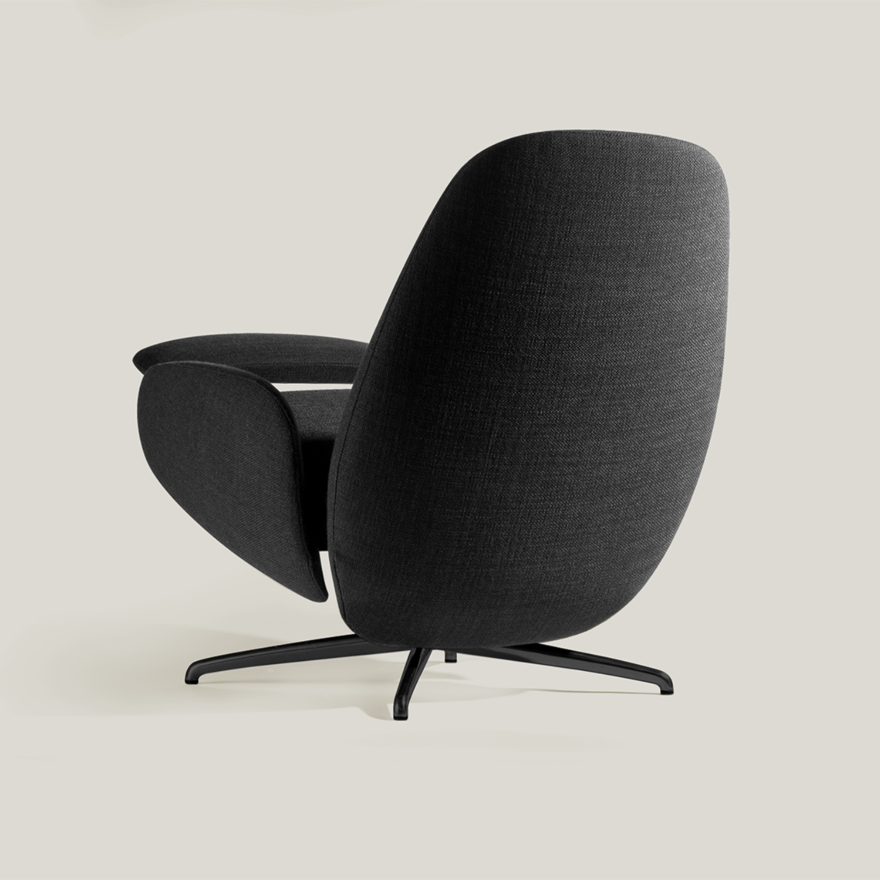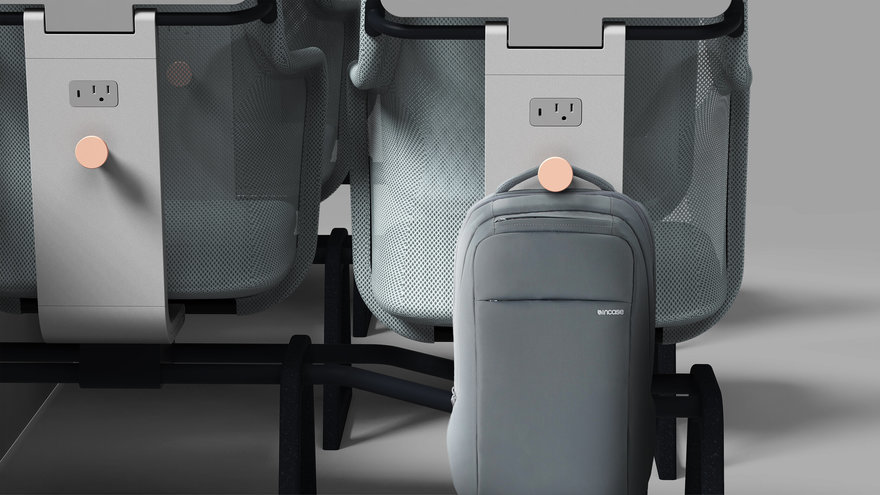In May 2022, WantedDesign hosted their annual Design Schools Workshop, which was presented with the support of media partner Core77, and hosted at Camp David, Industry City, from May 10 to May 14, 2022. This year's cohort of students explored the theme of "NEW RITUALS: Reconnecting, revitalizing, and refocusing through ceremony and artifact", and was led by Appalachian State University's own Donald Corey, Professor and Industrial Design Program Director, and Michael Rall, Associate Professor and Assistant Chair of the Department of Applied Design. The goal of the workshop was to create a ceremony or ritual, something that is tangible and repeatable, to readjust to the paradigm of this 'new' world since the pandemic began.
 The WantedDesign Schools Workshop winners present their design concept to the judges
The WantedDesign Schools Workshop winners present their design concept to the judges
Teams consisted of students from Appalachian State University (USA), Art Center College of Design (USA), Centro (Mexico), Escuela de Comunicación Mónica Herrera (El Salvador), Pratt Institute (USA), and Tecnológico de Monterrey (Mexico). Projects were judged by a team of design leaders including Allan Chochinov (Editor-at-Large of Core77 and Founding Chair of SVA NYC MFA Products of Design), Anna Horvath (Founder of AHA Objects), Hanna Anonen (Finnish designer), Jean-Jacques L'henaff (Leader at Lixil Global Design, Americas), and Victoria Milne (Principal of 6¢ design!).
In the end, the project "Altibajos" was awarded as the Workshop Winner, designed by Nadine Torres (Escuela de Comunicación Mónica Herrera), Oliver Dunkin (Appalachian State University), and Andrea González (Tecnológico de Monterrey).
 "Altibajos" by Nadine Torres, Oliver Dunkin, and Andrea González
"Altibajos" by Nadine Torres, Oliver Dunkin, and Andrea González
The winning project's name "Altibajos", which is the Spanish word for "ups-and-downs," is a response to the lack of interaction that humanity experienced because of the pandemic. The project resulted in the creation of an object designed to be a central meeting space for a weekly ritual. Within this ceremony, people sit together at a table to write on paper their highs and low each week, which they then discuss as a group. When group members are done reading their reflections, the paper is burned within the central ceramic object in a cleansing ritual.
We recently sat down with the designers behind the winning project to learn more about them, the work they focus on, and their future design dreams:
Andrea González

Where are you originally from, which school are you part of, and where were you based at the time of the workshop?
My name is Andrea González, I'm from Monterrey, Mexico and I study in Tecnológico de Monterrey and this semester (at the time of the workshop) I am studying abroad at Politecnico di Torino in Turin, Italy on an exchange program.
What did it mean to be part of the WantedDesign Schools Workshop (back in person)and how much was the theme inspiring for you?
This was the first time Tecnológico de Monterrey was invited to participate as a school on the WantedDesign Schools Workshop, so I'm grateful to be able to participate and also to win the workshop with my teammates. This year's theme meant a lot to me because this semester I have experienced a lot of changes in my life while living abroad, across the world from the people I love. Having my own rituals has helped me stay grounded and to feel like I have something to look forward to while being in a place that is new for me. Being able to go to the workshop in person has been important, because I don't think we could've accomplished what we did if we didn't meet in person; having one-on-one discussions in person about what can be the best way to approach our project was fundamental for our project.
One of the days of research for our design, we went to a park and talked about what we are grateful for and things that have helped us grow, and we realized how connected we are as persons, and how despite being from different places and backgrounds we can relate and understand each other. This sparked the idea for our project.

Meeting my teammates, Nadine and Oliver, was the best outcome of the workshop, to be able to fail and win as a team was truly an incredible experience. The theme of the workshop allowed us also to connect by doing fun things during our break; Nadine took us to try Salvadorian pupusas (which are incredible), we all talked about life back in our homes and we had fun during the design process, which was a great thing, because sometimes the process when designing can be really stressful.
Where do you see yourself in the world of design and what will be your dream career?
Having so many different career paths in design has helped me be ambitious about the different things I can do in my life. Through the years I have had different dream careers:from working on the set design of Marvel or SNL, to curating museum exhibitions; also having my own design studio, or working on I+D on a place that I found interesting. The truth is I am very open about my career possibilities and future; to do things that I enjoy and that help me grow and learn as a designer is all I want.
Where can we learn more about your work?
Instagram: @andrea.glzg LinkedIn: https://www.linkedin.com/in/andreaglzg/
Nadine Torres

Where are you originally from, which school are you part of, and where were you based at the time of the workshop?
I am from El Salvador, Central America and I studied Strategic Design in Escuela de Comunicación Mónica Herrera.
What did it mean to be part of the WantedDesign Schools Workshop (back in person)and how much was the theme inspiring for you?
Wanted Design was a space of learning and sharing experiences. I was working with two incredible designers who taught me so much, not just about design but also about their culture. It was a great opportunity to work with multidisciplinary teams who enriched my knowledge and let me share my perspective of design.What is for you the best outcome of the workshop experience?The best outcome was to experience our own project. We based our ritual in a moment where my team and I were sharing the highest and the lowest experience of our day.Getting to know each of my teammates and connecting with them even though we have differing interests, different goals, was the best part of the workshop. The workshop experience left me new friendships.
Where do you see yourself in the world of design and what will be your dream career?
I just finished my thesis about how Salvadorian fashion designers represent the cultural identity of the country. I would like to transmit the culture of El Salvador through my designs. It's important for me to communicate the talent and uniqueness of my country.Also, I would like to work on design projects that help develop education in my country and eradicate violence.
Where can we learn more about your work?
You can learn more about my work through my website or my Instagram account @neidine.torres.
Oliver Dunkin
Where are you originally from, which school are you part of, and where were you based at the time of the workshop?
I am from Satellite Beach Florida. I currently attend Appalachian State University in Boone, North Carolina where I live during the school year. I am a junior in Industrial Design with a focus in Product Design.
What did it mean to be part of the WantedDesign Schools Workshop (back in person) and how much was the theme inspiring for you?
I was extremely excited and honored to be chosen by my professors to participate in the Wanted Design Workshop. Being able to participate in a workshop that brings design students from around the world together in a post-Covid world was the most exciting part of the entire experience for me. The theme of this year's workshop "New Rituals" pushed me out of my product design comfort zone but also gave me the opportunity to explore how design could play a role in rebuilding and reconnecting with each other after the pandemic.
What is for you the best outcome of the workshop experience?
Obviously, I always want to put my best foot forward and originally I thought the best outcome for me would be to win the workshop showcase. As we went into the final presentations each one of my teammates and I talked about how no matter the outcome we were just happy to have met everyone at the workshop. I hope that in the future the connections that I made at this workshop lead to collaborations and work that would push the field of design to the next level.
Where do you see yourself in the world of design and what will be your dream career?
It's hard to pin myself to just one area of design because I have always felt like the job of a designer stretches much further than the look and feel of any one of the products they will design in the future. I have always been in love with footwear design and automotive design but in addition to those areas, I would love to find a position within the design field that deals with more conceptual and complex issues like climate change, Human rights, and peaceful resolution of conflict. I have loved every moment of my time in the industrial design program at App State and I am so grateful to all of my professors and peers for the experience I have had so far and for the skills I have learned in the process that helped me contribute to my team's success.
Where can we learn more about your work?
LinkedIn: https://www.linkedin.com/in/oliver-dunkin-b9798b180/ Website: https://www.olliedunkindesigns.com/ Instagram: https://www.instagram.com/olliedunkin/

Learn more about The WantedDesign Schools Workshop program and discover all of the projects here.
from Core77 https://ift.tt/F9HIDv1
via
IFTTT




 "Full scale 3D prints of the Vala Recliner's components allowed Atlason to evaluate the ideal positioning of each element around the mechanisms."
"Full scale 3D prints of the Vala Recliner's components allowed Atlason to evaluate the ideal positioning of each element around the mechanisms."



























 The WantedDesign Schools Workshop winners present their design concept to the judges
The WantedDesign Schools Workshop winners present their design concept to the judges "Altibajos" by Nadine Torres, Oliver Dunkin, and Andrea González
"Altibajos" by Nadine Torres, Oliver Dunkin, and Andrea González

















